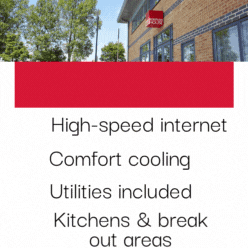In case you missed it see what’s in this section
Let's Talk
Your Total Guide To motoring
What are fuel injectors, what types there are. Symptoms and causes of their malfunction. How to take care of fuel injectors
The modern world dictates more and more requirements, including those of car manufacturers. In addition to the constant increase in requests for comfort and safety, there are also environmental requirements that every automotive engineer needs to take into account.
It all comes down to the fact that the issue of fuel supply to the combustion chamber - becomes quite a complex mechanism with a fraction of a second accuracy of operation. What do we mean? The engine calculates the optimum quantity of fuel, the way of its atomization, the moment of combustion and many other aspects, necessary for the correct work of a modern engine. The fuel injection system has gone through many changes over the years. Today we will talk about its component, namely fuel injectors, their types, symptoms and causes of malfunction and much more.
Why do we need fuel injectors and what are they like?
Initially, in order to understand how fuel injectors work, we need to turn to physics. So, what do we need for an engine to work? That's right, for the fuel to burn. However, there is a nuance here: it should not just burn, but do it in such a way that it was possible to achieve maximum benefit from this action. How to achieve this?
- It is necessary to atomize the fuel in a liquid state so that all its droplets ignite and push with the greatest force the piston. In order to make this possible, a small explosion is needed, which only occurs when the gasoline vapor, not the liquid, is ignited.
- In addition, a 15-fold volume of air must be added for optimum performance, which must be mixed with the fuel in equal proportions.
So, a fuel injector is a tool that converts liquid fuel to a very fine wet dust, in addition, the fuel in this injection is a strict amount, so that only the amount necessary for adequate operation enters the combustion chamber. The important thing to understand here is that the more fuel that goes into the injectors, the greater will be the payoff from its combustion. That is, the tasks they perform can be divided into two categories: they are responsible for supplying the right amount of fuel, converted into the optimal form at the right time, and they take care of the quality of the engine and its serviceability in general. Modern realities use layer-by-layer fuel injection, which is more efficient and faster.
Types of fuel injectors:
- Mechanical injectors. They are actuated by fuel pressure. That is, at the moment when the pressure is applied, the valve opens. The last time the fuel is injected, the pressure begins to drop and the valve closes.
- Electromagnetic injectors. They are used in cars that use gasoline as fuel. In this case, an electromagnet is responsible for opening the needle.
- Electrohydraulic injectors. Designed for cars that use diesel fuel. Work on the principle of equalizing pressure on the shut-off needle.
- Piezoelectric nozzles. The modern variant, which is used in diesel and gasoline cars. Gives the opportunity to supply fuel into the combustion chamber in 2-4 steps. In this case, the movement of the needle is controlled by a piezo element.
- Nozzle pump. In the design, the nozzle is connected to the pump, and the solenoid coil or piezo crystals may be responsible for opening the valve.
Causes and signs of failure
- Sometimes it happens that the nozzle is cracked and, as a consequence, fuel will start to ooze out of it. Accordingly, it will not get to its destination, and the leak, you can see at the nearest fuel ramp.
- Pungent smell of fuel, which is also due to a leak. It is also possible because the nozzle is stuck in the open position.
- Excessive smoky exhaust. A broken nozzle causes uneven combustion and this is the reason why you smell fuel.
- Uneven idling is another sign of broken injectors. Since the fuel is being injected uncharacteristically, the idle will be sharp and the rpm will drop very low.
- A fuel injector that is not working will cause the cylinder it is injecting fuel into to not ignite. This is what will cause you to feel the engine vibration.
- If the injector is not damaged, but is clogged, little fuel will flow into the engine and the engine will skip ignition while running.
- Unfortunately, another sign of a broken injector will systematically siphon money from you. Since the engine will not get the right amount of fuel, it will demand more and more of it.
- Engine spurting. Here is the reverse situation, if the injectors are injecting a lot of fuel (more than needed), there will be a surge in the engine and the car will jerk.
What to do to make the injector last for a long time?
There is a fairly simple option that can help the injectors, and the entire fuel system feel better. We are talking about injector flushing. This procedure, in general, gives the so-called "second" life to the fuel injection system. The procedure helps to eliminate uneven engine operation, idling, loss of power and can remove increased fuel consumption.
Sources of information:
Information about symptoms and causes of fuel injectors failure taken from buycarparts.co.uk
Weather in Swindon
Listings




















